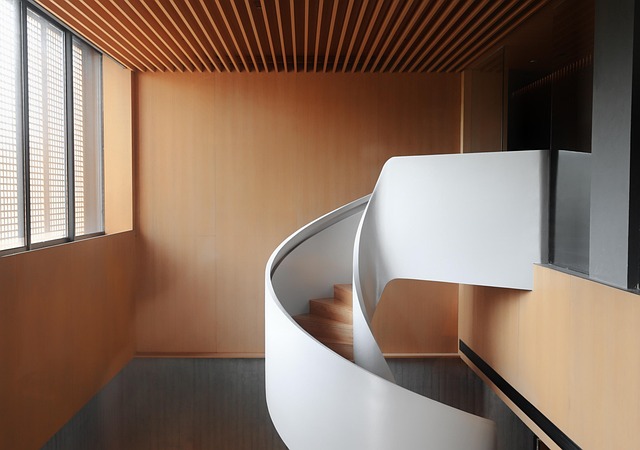Responsive web design is a cornerstone of modern WordPress design, enabling websites to adapt seamlessly to diverse devices and screen sizes. By leveraging media queries, flexible grid systems, viewport meta tags, and an extensive theme/plugin library, WordPress designers create dynamic, mobile-friendly experiences with optimal viewing, navigation, and aesthetics across all devices. Best practices include mobile-first design, efficient coding, minimal heavy media, browser caching, and customizable themes, ensuring enhanced user engagement, improved SEO rankings, and accessible designs.
In today’s digital era, ensuring your website looks and functions perfectly on every device is paramount. Responsive WordPress web design isn’t just a trend; it’s essential for user experience and search engine optimization (SEO). This comprehensive guide delves into the fundamentals of responsive design, highlighting why WordPress is the perfect platform to achieve it. From understanding key features and customization options to best practices and performance optimization, we’ll equip you with the knowledge to create visually appealing and mobile-friendly WordPress designs.
Understanding Responsive Web Design: The Basics

Responsive web design is a fundamental concept in modern WordPress design, ensuring websites adapt seamlessly to various devices and screen sizes. It’s no longer an option but a necessity given that users access the internet through desktops, tablets, and smartphones at unprecedented rates. This approach involves creating flexible layouts, images, and CSS styles that adjust dynamically based on the user’s display, providing an optimal viewing experience regardless of the device.
In WordPress design, achieving responsiveness means utilizing media queries, flexible grid systems, and viewport meta tags. Media queries allow designers to apply specific style rules for different screen resolutions, ensuring content remains legible and easily navigable on smaller screens. A well-designed WordPress website should seamlessly transition from a traditional layout on larger desktops to a more compact, user-friendly interface on mobile devices, maintaining its aesthetic appeal and functionality across the board.
Why WordPress is the Ideal Platform for Responsive Design

WordPress has emerged as the go-to platform for web design, offering an array of benefits that make it ideal for creating responsive and visually appealing websites. Its user-friendly interface allows designers and developers to effortlessly craft dynamic, mobile-friendly experiences. With a vast library of themes and plugins, WordPress provides endless customization options, enabling professionals to tailor designs to meet the diverse needs of modern users across various devices.
One of the key strengths of WordPress is its inherent responsiveness. Out of the box, many themes are optimized for different screen sizes, ensuring content remains legible and functional on desktops, tablets, and smartphones. This built-in flexibility, coupled with the platform’s adaptability through custom coding and plugin integrations, makes WordPress an excellent choice for achieving seamless responsive design without compromising aesthetics or user experience.
Key Features of Responsive WordPress Themes

Responsive WordPress themes are designed to adapt seamlessly to various screen sizes and devices, ensuring an optimal viewing experience for users on desktops, tablets, and mobile phones. Key features that define these themes include a fluid grid system, flexible images and layouts, and media queries that adjust content based on screen dimensions. This flexibility allows for beautiful, functional designs that enhance user engagement and SEO rankings, crucial aspects of modern WordPress Design.
Additionally, responsive themes often incorporate built-in breakpoints, enabling developers to easily customize the layout for different device types. These themes also prioritize speed and performance, loading quickly and efficiently across all platforms, which is vital for retaining visitors and improving search engine optimization (SEO) scores. This attention to detail in WordPress Design results in websites that are not only aesthetically pleasing but also highly functional and accessible.
Customization Options for Optimal User Experience

Responsive WordPress web design goes beyond simply ensuring your site looks good on various devices. It’s about offering a truly personalized experience for every user, regardless of their screen size or preferred access method. Customization options play a pivotal role in achieving this. With WordPress Design, themes and plugins empower designers and developers to tailor layouts, color schemes, typography, and navigation to suit individual needs. From adjustable header settings to flexible content blocks, these adjustments ensure the site remains functional and aesthetically pleasing across desktops, tablets, and mobiles.
Moreover, dynamic content loading and lazy loading techniques further enhance performance, allowing for faster page loads without sacrificing visual appeal. This level of customization not only caters to diverse user preferences but also boosts engagement and retention rates, ultimately leading to a more successful online presence.
Best Practices for Creating a Visually Appealing Responsive Site

Creating a visually appealing responsive WordPress site involves adhering to best practices that ensure a seamless user experience across various devices. One key practice is prioritizing mobile-first design, which means designing with smaller screens in mind and then scaling up for larger ones. This approach guarantees that your site loads quickly and displays optimally on smartphones and tablets before catering to desktops.
Another essential practice is leveraging media queries, CSS techniques that adjust layouts and styles based on screen size. By employing flexible grids and responsive images, you can ensure that your site’s content remains readable and easily navigable, regardless of the device used. Additionally, maintaining a clean and consistent color palette, choosing legible fonts, and incorporating ample white space enhances visual appeal while preserving readability. These practices collectively contribute to an engaging WordPress design that captivates users across all platforms.
Optimizing Performance and Speed for Mobile Users

In today’s digital era, where mobile usage dominates, optimizing WordPress design for speed and performance on mobile devices is paramount. Responsive web design ensures that websites adapt seamlessly to various screen sizes and resolutions, providing an ideal user experience regardless of whether a visitor is on a smartphone or tablet. By implementing efficient coding practices, minimizing the use of heavy media, and leveraging browser caching, WordPress developers can significantly enhance the loading times for mobile users.
A well-optimized WordPress design not only improves speed but also boosts overall website performance. Faster load times lead to reduced bounce rates as mobile users are more likely to stay on a site that loads quickly. Search engines also favor faster websites in their rankings, making responsive design a dual benefit for SEO efforts. Ultimately, this translates into increased user satisfaction and better online visibility for businesses utilizing WordPress platforms.
